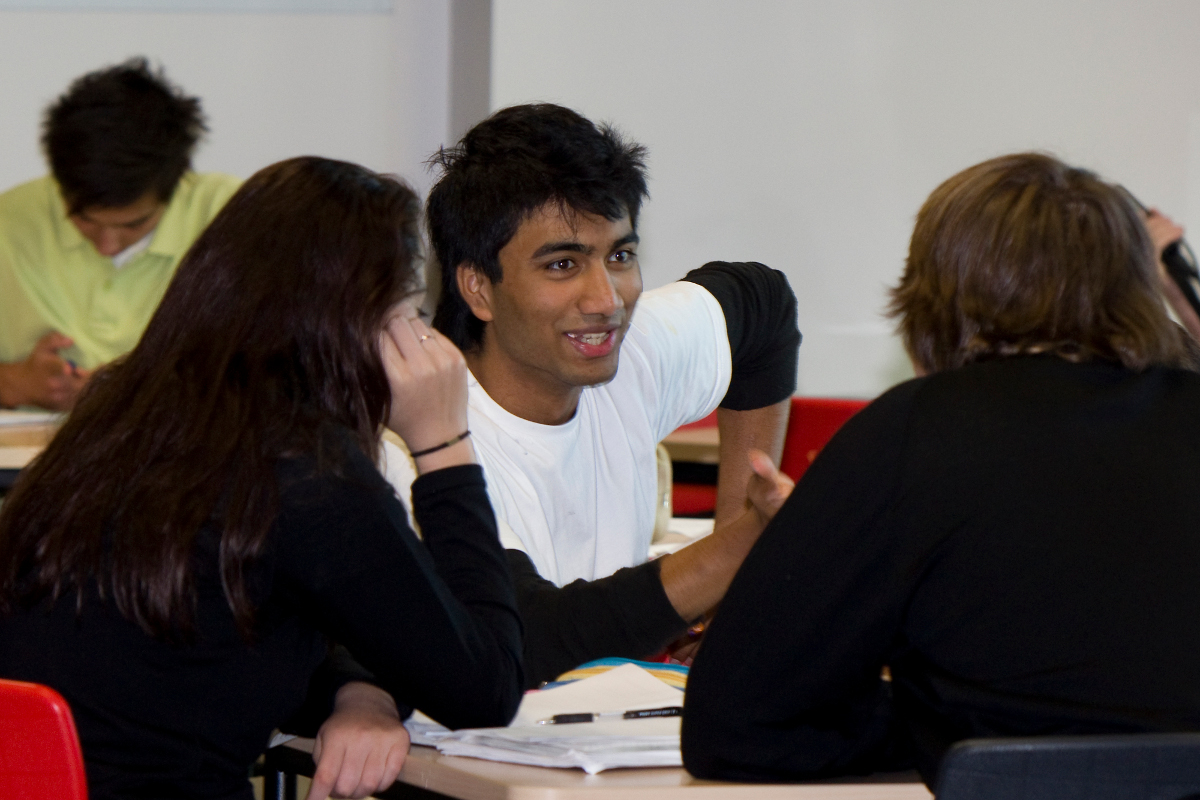(Volume 1 Módulo 0) Introductorio: Interacciones
19 Para terminar… ¡Conversemos!
¡Conversemos! 1: Seguimos conociendo a nuestros compañeros de clase (We continue getting to know our classmates).
During the in-class ¡Conversemos! 1 activity, you are going to greet your classmates and introduce yourself (remember to use the expressions we have learned). Then you will interact with your classmates and get to know them better! Take turns asking and answering one another’s questions. Are you all similar or different? Try to expand on the conversation beyond the Q&A format. Before this in-class activity, please complete Pasos 1 through 5 below and submit them to Canvas.
[Copy pre-activity Google doc here]
Paso 1. Start this pre-activity assignment by watching the following video to get more information about ways in which you can get to know another person (the speed can be slowed down on the video player):
Presentarse en español
Paso 2. Now prepare a list of questions you will use in class to find out more about your classmates. Use the examples in previous sections of the textbook and the video above. You should frequently use the verbs ser and hay. For example, you can ask what their name is, of course; where they are from; who their favorite professor or class is; etc. But you can always be more adventurous and try to use new words! Make sure to include a mix of yes/no questions (e.g., ¿Eres de Austin?) and information questions (e.g., ¿De dónde eres?).
| 1. | |
| 2. | |
| 3. | |
| 4. | |
| 5. | |
| 6. | |
| 7. | |
| 8. | |
| 9. | |
| 10. |
Paso 3. Next prepare a list of useful vocabulary words and phrases from previous sections of our textbook (and beyond) to share information about your own personality and interests. Importantly, do not write complete sentences here. You will lose points during the in-class ¡Conversemos! activity if you are simply reading your answers to your classmate’s questions.
| 1. | |
| 2. | |
| 3. | |
| 4. | |
| 5. | |
| 6. | |
| 7. | |
| 8. | |
| 9. | |
| 10. |
Paso 4. Remember, cognates are a great tool for communication. Have you included any in Paso 2 or Paso 3 above? Go ahead and copy all the cognates you used above into the first two columns below. Columns three and four offer a brief list of cognates that are personality traits. Practice pronouncing these words and make sure you know both their singular and plural forms.
| Los Cognados | |||
| inteligente | elegante | ||
| paciente | pesimista | ||
| interesante | responsable | ||
| importante | sentimental | ||
| flexible | rebelde | ||
| idealista | tolerante | ||
| extravagante | informal | ||
| honesto/a | optimista | ||
| serio/a | admirable | ||
| generoso/a | independiente | ||
| extrovertido/a | materialista | ||
Paso 5. After you are finished with the in-class interview, you will share one additional interesting fact about yourself (something that your classmates did not ask). Write some ideas here.
| Por ejemplo: Toco el violín y mis hermanos son músicos.
|
Paso 6. Upload this pre-activity to Canvas before the in-class ¡Conversemos! activity.
Más práctica…

Paso 1. Now think about everything you have learned about greetings and introductions in this module and through this text. With one or two classmates, summarize the information you could give someone who is interested in knowing what to do in formal and informal situations in a Spanish-speaking country. Use the following table.
| Situación formal | Situación informal | |
| Saludo verbal | Buenos días,… | |
| Saludo no verbal | Apretón de manos | |
| Pronombre de sujeto (singular y plural) | ||
| Presentaciones (Introductions) |
Paso 2. Create a formal or informal situation with your partners. Use the verbal and non verbal forms of communication you included in your table in Paso 1. Include the following:
- Greeting
- Introductions
- Three or four questions to get to know the other person

